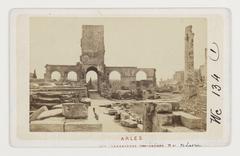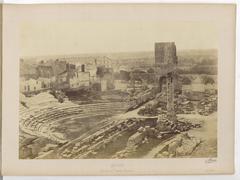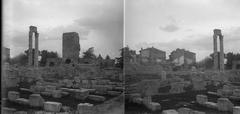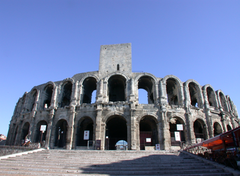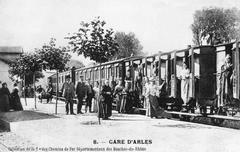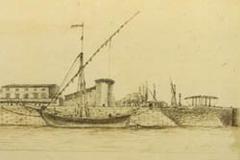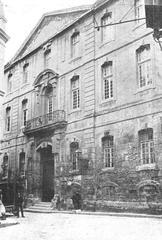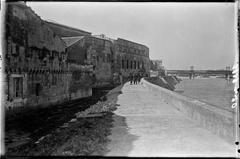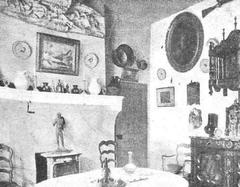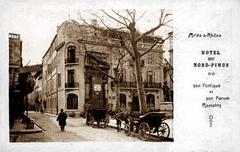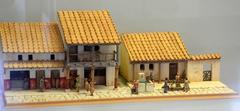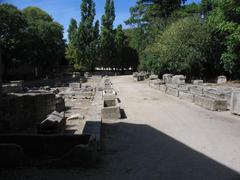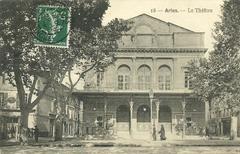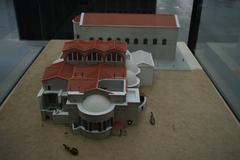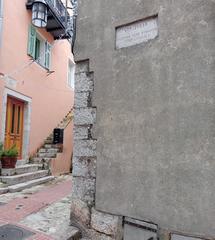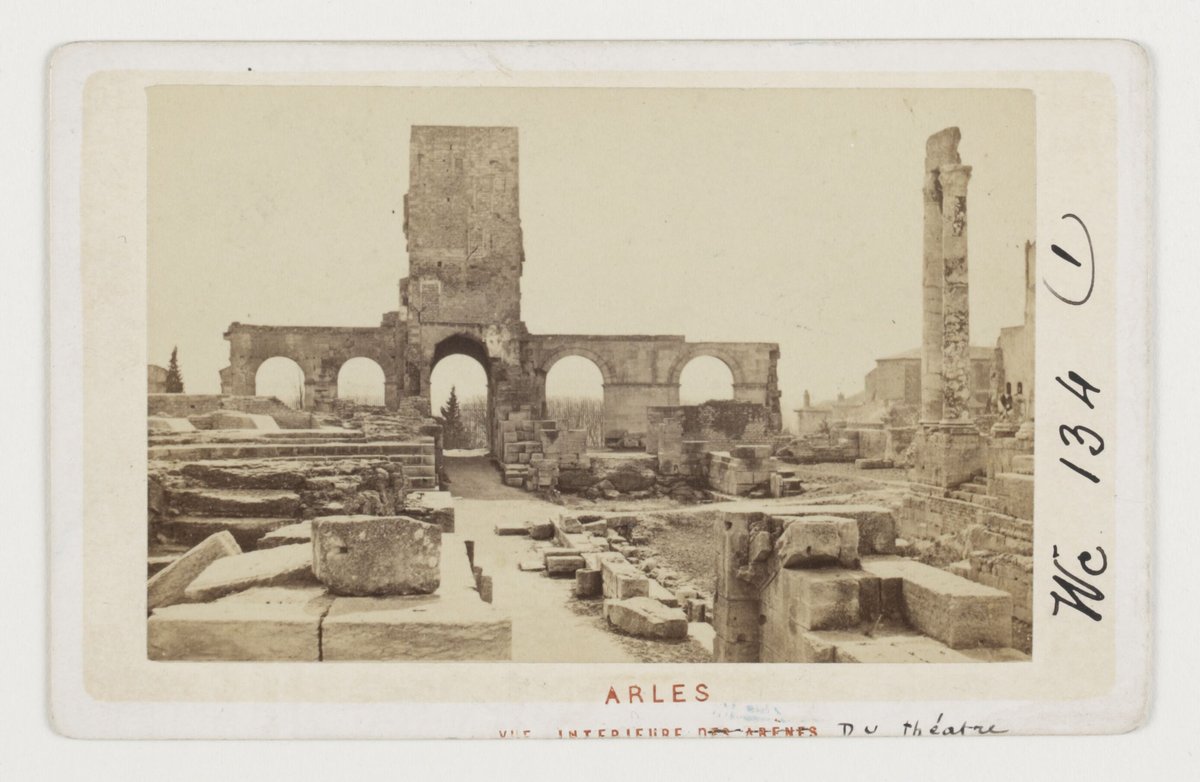
Visiting Hours, Tickets, and Historical Insights of Théâtre antique, Arles, France
Last Updated: 19/07/2024
Introduction to Théâtre antique, Arles
The Théâtre Antique in Arles, France, is an awe-inspiring symbol of Roman architectural genius and cultural prowess. Built in the 1st century BC, this ancient theater has stood the test of time, evolving from a bustling center of Roman entertainment to a UNESCO World Heritage Site that continues to captivate visitors today (Discovering Théâtre Antique in Arles). Nestled in the heart of Arles, it offers a unique blend of historical significance and modern cultural vibrancy. This comprehensive guide aims to provide all the essential information you need for a memorable visit, from its rich history and architectural marvels to practical travel tips and visitor information.
Detailed Table of Contents
- Introduction
- A Glimpse into Roman Entertainment
- Architectural Prowess: A Blend of Greek Inspiration and Roman Ingenuity
- From Antiquity to Modernity: A Journey Through Time
- A Living Legacy: Théâtre Antique Today
- Visitor Information
- Opening Hours
- Ticket Prices
- Travel Tips
- Accessibility
- Photographic Spots
- Planning Your Visit
- Best Time to Visit
- Getting There
- Getting Around
- FAQ
- Conclusion
- Sources and Further Reading
Discovering Théâtre Antique in Arles - History, Tickets, and Visiting Hours
The Théâtre Antique in Arles, France, is a testament to the grandeur of the Roman Empire and its enduring legacy in Western civilization. Constructed in the 1st century BC, this architectural marvel served as a vibrant hub for entertainment and social gatherings for the Roman colony of Arelate (present-day Arles).
A Glimpse into Roman Entertainment
The theater’s construction coincided with the Romanization of Gaul, reflecting the Roman Empire’s ambition to spread its culture and influence. As a center for entertainment, the Théâtre Antique hosted a variety of spectacles, including:
- Gladiatorial Combats: These brutal yet popular events drew massive crowds who thrilled to the sight of gladiators battling for glory and survival.
- Chariot Races: The roar of the crowd and the thunder of hooves filled the air during these exhilarating races, showcasing the speed and skill of both charioteers and horses.
- Classical Plays: The theater served as a platform for performances of Greek and Roman tragedies and comedies, offering insights into the literary and theatrical traditions of the time.
These events provided a shared cultural experience for the diverse population of Arelate, fostering a sense of community and Roman identity.
Architectural Prowess: A Blend of Greek Inspiration and Roman Ingenuity
The Théâtre Antique’s architecture reflects a harmonious blend of Greek and Roman influences, showcasing the architectural prowess of the era. Key features include:
- Semi-circular Seating (Cavea): The theater could accommodate up to 10,000 spectators across its tiered seating arrangement. This semi-circular design, inspired by Greek theaters, ensured optimal acoustics and sightlines for all attendees.
- Orchestra: This circular space at the base of the seating area served multiple purposes. It hosted the chorus during theatrical performances, provided seating for dignitaries during other events, and even transformed into an arena for gladiatorial combats.
- Stage (Pulpitum): Elevated above the orchestra, the stage provided a platform for actors and performers. While the original wooden stage has long since disappeared, its foundations remain visible today.
- Stage Wall (Scaenae Frons): This elaborate backdrop to the stage featured intricate decorations, including columns, statues, and niches. Although only fragments of the original wall remain, its grandeur is still evident.
From Antiquity to Modernity: A Journey Through Time
The Théâtre Antique’s history extends far beyond its Roman origins. Over the centuries, it has witnessed periods of both glory and decline:
- Early Middle Ages: With the decline of the Roman Empire, the theater fell into disuse and was gradually filled with debris and sediment.
- Medieval Period: The site was repurposed as a fortress, with houses and towers constructed within its walls. This adaptation provided protection for the local population but further obscured the theater’s original structure.
- 18th Century: The theater’s historical significance was rediscovered, sparking renewed interest in its preservation. Excavation efforts began, gradually revealing the buried ruins.
- 19th and 20th Centuries: Systematic archaeological excavations and restoration projects brought the theater back to life. The site was cleared of debris, and missing elements were carefully reconstructed, based on archaeological evidence and architectural principles.
A Living Legacy: Théâtre Antique Today
Today, the Théâtre Antique stands as a UNESCO World Heritage Site, attracting visitors from around the globe. It serves as a vibrant cultural center, hosting a variety of events, including:
- Performances: The theater’s remarkable acoustics and evocative atmosphere make it an ideal venue for concerts, operas, and theatrical productions.
- Festivals: The annual Arles Photography Festival utilizes the theater as a backdrop for exhibitions and events, showcasing contemporary art within a historical setting.
- Guided Tours: Visitors can explore the theater’s history and architecture through guided tours, gaining deeper insights into its significance.
Visitor Information
- Opening Hours: The Théâtre Antique is open daily from 10:00 AM to 6:00 PM. Hours may vary during special events or holidays.
- Ticket Prices: General admission tickets are €8 for adults, €6 for students and seniors, and free for children under 12.
- Travel Tips: Arles is well-connected by train and bus. The theater is a short walk from the Arles train station. Consider visiting nearby attractions such as the Arles Amphitheatre and the Church of St. Trophime.
- Accessibility: The site is wheelchair accessible, with ramps and designated viewing areas.
- Photographic Spots: Capture stunning photos from the upper tiers of the seating area, which offer panoramic views of the stage and surrounding city.
FAQ
- What are the opening hours of Théâtre Antique? The theater is open daily from 10:00 AM to 6:00 PM.
- How much are tickets for Théâtre Antique? General admission is €8 for adults, €6 for students and seniors, and free for children under 12.
- Is the Théâtre Antique accessible for visitors with disabilities? Yes, the site is wheelchair accessible.
- Are guided tours available? Yes, guided tours are available and provide in-depth information about the theater’s history and architecture.
- What other attractions are nearby? Nearby attractions include the Arles Amphitheatre and the Church of St. Trophime.
Conclusion
The Théâtre Antique in Arles offers a captivating journey through time, inviting visitors to immerse themselves in the grandeur of Roman architecture and the enduring legacy of classical civilization. Plan your visit today and discover the rich history and cultural heritage that this ancient theater has to offer.
Call to Action
For more information, download the Audiala app, check out our other related posts, or follow us on social media for updates and special offers.
Sources and Further Reading
- Discovering Théâtre Antique in Arles - History, Tickets, and Visiting Hours, 2024, Audiala source url
- Complete Guide to Visiting Théâtre Antique in Arles - Hours, Tickets, and Tips, 2024, Audiala source url
- Théâtre Antique - A Guide to Cultural Events, Tickets, and Visiting Hours in Arles, 2024, Audiala source url
